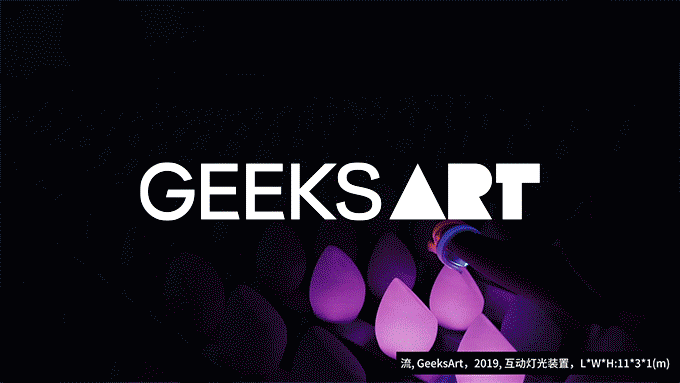此项目位于北京通州区台湖镇唐大庄村,其特殊的地理位置使其与北京环球影城度假区相距仅 2 公里,成为环球影城周边距离最近的民宿村落之一。我们的项目处在村子东南角的十字路口这一关键位置。初临此地,映入眼帘的是一片荒芜衰败之景,坡屋顶建筑的房盖缺失,庭院中杂草丛生,门窗洞口更是被改得奇形怪状。经一番了解,原是前一租户欲将此地打造为民宿,却在装修中途搁浅,最终无奈放弃。于是,业主委托多么工作室对其进行全面改造,仍作民宿之用。
Site and Environment
This project is located in Tangdazhuang Village, Taihu Town, Tongzhou District, Beijing. Its unique geographical position places it just 2 kilometers from Universal Studios Beijing Resort, making it one of the closest B&B villages near the theme park. The project occupies a key location at the southeast corner of the village crossroads.
Upon first arriving at the site, we were greeted by a scene of desolation and decay. The sloping roofs of the buildings had collapsed, the courtyard was overrun with weeds, and the doors and windows were awkwardly reshaped into bizarre forms. The site was previously intended to be a B&B by the previous tenant but was abandoned midway through the renovation. The owner entrusted Atelier d’More to completely transform the site while retaining its use as a B&B.
营造神秘的沿街入口
在我们的设计中时常强调三个关键词,流动、衔接、延伸。几何体量流动的关系,以及建筑在场域中的气质,一直是我们的关注重点,也是我们的设计惯性,这种惯性是无意识的并且随着时间在不断转变。起初,建筑外墙的沿街立面凌乱不堪,平顶与坡顶房的山墙面生硬拼接,呈现出随意、单调的沿街景象。为扭转这一局面,重塑位于主要路口建筑的形象,赋予其体量感与可辨识度,我们进行了深入的推敲。先是给予建筑一个微微向前的力,并以入口门洞的四个角为起点向四周延伸至建筑的边缘,塑造出全新的结构线,随后将这些线条柔化,形成一个内凹形的入口灰空间,使扁平的墙体有了几何雕塑感,静态的建筑有了流动感。这个充满流动感的入口,既实现了雨棚的功能,又不见雨棚,完美地融入到了建筑的身体。而这些流动的线条与一望无际的白色,为建筑赋予了诗意与惊喜之感。
Creating a Mysterious Street-Facing Entrance
In our designs, we often emphasize three key principles: flow, connection, and extension. We focus on the geometric interplay of forms and the integration of architecture into its environment, which are central to our design philosophy. Initially, the building’s street-facing façade was disorganized, with mismatched flat and sloping rooflines creating a haphazard and monotonous streetscape. To address this and redefine the building’s image at this prominent corner, we gave the structure a subtle forward motion. Starting from the four corners of the entrance arch, we extended lines outward to the edges of the building, creating a new structural framework. These lines were then softened into an inward-curving entrance recess, giving the flat wall a sculptural quality and imparting a sense of flow to the static structure. This dynamic entrance serves as a rain canopy without appearing separate from the architecture, blending seamlessly into the structure. The flowing lines and the endless white tones imbue the building with a sense of poetry and surprise.
建筑整容
鉴于建筑原本的破败状况,为使其脱胎换骨,我们并未选择大刀阔斧的推倒重建,而是采用融合的方式,从既有建筑中探寻可结合的线索,对其进行细微的改造,以营造出颠覆性改变的错觉。我们将这种改造方式称为建筑整容。这里的整容绝非简单的粉刷与修整,而是基于原本的结构骨架建立一种新的秩序关系。通过少量局部的改造,影响建筑的大部分感官效果。在新形象中仍能窥见旧建筑的影子,甚至能让您察觉到其变美的过程。
Architectural Facelift
Given the original building’s dilapidated state, we opted not to demolish and rebuild but to embrace a fusion approach. By uncovering and integrating clues from the existing structure, we introduced subtle modifications to create the illusion of a transformative makeover.
We refer to this approach as an architectural facelift—not merely repainting or repairing but establishing a new order based on the original structural framework. Through selective and minimal interventions, we significantly altered the building’s sensory experience. The new design retains glimpses of the old structure, allowing visitors to perceive its transformation and newfound beauty.
顺势而为的布局
平面布局大体维持了原本建筑的关系框架。由于前一任租户已砌好了客房的隔墙,为了节省成本,我们只能基于此进行房间分配。在充分考量流线与动静分区后,我们将前院平房的三个开间中,两间合并为一个公共空间,设置了休息区、餐厅、前台、布草间、卫生间。坡顶房的三个开间里,其中两间已有用于隔层的钢结构,我们继续将其打造成 LOFT 家庭房。公区大厅的位置一经确定,两个院子便与其共同成为整个场地的核心区域,为四周的客房提供服务。
Adaptive Layout
The overall layout largely preserves the original architectural framework. The previous tenant had already constructed partition walls for the guest rooms, and to minimize costs, we retained this arrangement for room allocation. After carefully considering circulation and zoning, we merged two of the three rooms in the front courtyard to create a public space, including a lounge, dining area, reception desk, linen room, and restroom.
The three spaces in the sloping-roofed area already featured steel structures for mezzanines. We developed these into loft-style family rooms. With the central public area established, the two courtyards became the core of the site, serving the surrounding guest rooms.
两个院子原本就存在于建筑之中,皆给人以内向宁静的氛围。我们将前院定义为开放空间,左右两侧的建构形式对称且有秩序,塑造出了极具精神性的纯白院落空间。后院则相对封闭,主要为客人提供一个具有一定私密性、可供放空发呆的室外活动空间。而大厅空间成为了连接前后两个院子的媒介,大块透明的落地玻璃面使光和视线得以贯穿。
The two courtyards, which existed in the original layout, evoke a sense of inward peace. We defined the front courtyard as an open space with symmetrical and orderly structures on both sides, creating a spiritual and serene white courtyard. The rear courtyard, in contrast, is relatively enclosed, providing guests with a private outdoor retreat for relaxation. The main hall acts as the connecting medium between the two courtyards, with large, transparent floor-to-ceiling glass surfaces allowing light and views to flow through.
软装硬做,手工感建筑
少量的材料、极少的装饰,一直是我们对纯粹空间的向往与追求。在我们的设计中,始终秉持着对建筑、空间、家具一体化控制的理念。项目中大部分工作都是由设计师通过数字化方法预制,再由师傅现场手工制作完成,大到建筑外墙、屋顶雨水嘴、大门,小至室内的房门、床架、家具,都倾注着我们的专注与匠心。相较于直接购置成品,我们更倾向于让各个元素在现场诞生,它们彼此自然共生,仅需少量必要的成品作为补充,只为营造出独属于我们的设计语言、整体自然协调统一的空间,让建筑语言随时间沉淀,愈发醇厚。
Handmade Architecture with a Sense of Craft
Minimal materials and sparse decoration have always been our pursuit of pure space. In this project, we adhered to the principle of integrated control over architecture, space, and furniture. Most of the elements were prefabricated digitally by designers and then handcrafted on-site by artisans—from the building’s exterior walls, roof water spouts, and main doors to the interior elements like room doors, bed frames, and furniture.
Rather than purchasing ready-made products, we preferred to have these elements born on-site, allowing them to coexist naturally. Only a few essential ready-made pieces were added as supplements, creating a design language that is uniquely ours. This approach ensures a cohesive and harmonious space where the architectural language grows richer and more profound with time.
项目信息——
项目名称:睡眠研究所·糖
项目类型:酒店民宿
设计方(建筑设计/景观设计/空间设计/家具设计):多么工作室
项目设计:2023年
完成年份:2024年
设计团队:王维,陆志毅,盛乐
项目地址:北京,中国
建筑面积:200㎡
用地面积:255㎡
摄影版权:多么工作室
客户:睡眠研究所
Project name: Sleeping lab·Tang
Project type: Hospitality
Design: Atelier d’More
Design year: 2023
Completion Year: 2024
Leader designer & Team: Wei Wang, Zhiyi Lu, Le Sheng
Project location: Beijing, China
Building area: 200㎡
Site area: 255㎡
Photo credit: Atelier d’More
Clients: Sleeping lab
Materials: Plywood, Washed stone, Inorganic coatings, Polycarbonate sheet










































